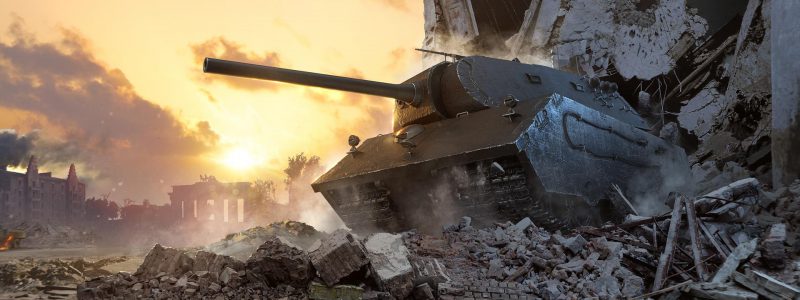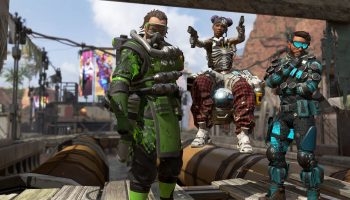Hello!
A few months ago I've made to explore some of the supposed drawbacks of gold ammunition, focusing on normalization and penetration loss over distance of gold shells for elite tier 8 and 10 vehicles.
Since then I was thinking of expanding it to cover all tanks, and possibly even all guns, but doing that manually would be a massive pain. Fortunately, /u/Jak_Atackka provided me with the raw data from tanks.gg's database, so I could write a program to do preliminary data processing. Thanks!
So, for the most part this post will be a copy of the other one, with the only major differences being the data set and potentially the conclusions drawn from it.
The source code of the data processing program can be found .
1. Mechanics
First, a primer on the relevant game mechanics.
Penetration loss over distance – AP and APCR shells lose some penetration as they fly. They start losing penetration at 100m, and reach a minimum value at 500m. The exact amount of penetration lost differs from shell to shell.
Angled armour is harder to penetrate than flat armour. The harsher the angle of impact, the stronger this effect is. Typically angle of impact is given as angle from a line perpendicular to the armour plate, so for a vertical plate it's the angle between a horizontal line and the path of the shell. Angling is why the IS-7s pike nose can bounce shots despite being only 150mm thick.
Normalization is a mechanic that reduces the effective angle of impact by a few degrees, depending on the type of shell used. For AP that is 5 degrees, so a hit at 60 degrees is treated as if it was at 55 degrees, which limits the effectiveness of angled armour somewhat.
Ricochet happens when a shell hits armour at an angle above a certain threshold, and it means that the shell automatically bounces off, no matter its penetration value. For AP this threshold angle is 70 degrees, and this angle is checked before normalization. Ricochet is why the high tier Swedish TDs can bounce shots despite having extremely thin armour.
Overmatch is actually 2 mechanics: 2x overmatch and 3x overmatch, and both apply only to AP and APCR. 2x overmatch happens when the caliber of an incoming shell is more than 2 times larger than the nominal thickness of a hit plate, and it causes the shell to receive much more normalization, depending on its base normalization and the ratio of caliber to armour thickness. 3x overmatch happens when the caliber of the shell is more than 3 times larger than armour thickness, and it prevents the shell from ricocheting. This is why those aforementioned Swedish TDs crumble under fire from high-caliber guns.
Ammo-specific mechancis – both common types of gold ammo, APCR and HEAT, have mechanical differences compared to the common AP. Those differences are as follows:
APCR:
Less normalization – 2 degrees versus the 5 degrees of AP, which also lowers the impact of overmatch.
Loses more penetration over distance.
Higher projectile velocity.
HEAT:
No normalization.
Does not lose penetration over distance
Lower projectile velocity.
Increased ricochet angle – 85 degrees versus 70 for AP and APCR.
Can't overmatch.
If it strikes spaced armour, it starts losing penetration as it flies further – 5% nominal penetration lost per 10 cm of flight.
2. Data
What I have prepared is a comparison of the impact of switching from silver to gold shells for nearly all available combinations of tank and gun, based on the penetration increase, the different amounts of normalization, and differences in penetration loss over distance. I have disregarded different projectile velocity, overmatch, and the spaced armour interaction of HEAT since putting those mechanics into numbers is a much more complex task. The only tank-gun combinations that are missing are the ones that have the same type of shell for silver and gold, gold HE, or some other non-standard ammo selection.
From what I've been told about this data set, it's possible that there are some entries that aren't actually available in game, so if you see something that doesn't make sense please inform me.
The link leads to a Google Sheets document containing seven sheets, three primary and four secondary. The primary sheets hold the data for each explored silver-gold ammo loadout, so one for AP-APCR, one for AP-HEAT, and one for APCR-HEAT. The secondary sheets contain summaries of that data for each one of the three primary sheets individually, and for the entire data set.
Primary sheets each contain a table that has a column for the tank's name, the gun's name, and then two similar groups of columns that hold the penetration and derived values of shells at 100m and 500m of distance to target. The "Multiplier" column holds the multiplier to penetration you get for switching to gold, calculated as the ratio of gold penetration to silver penetration. The most important column is the "breakeven angle" column, which says at which angle the bonus to penetration of gold shells is finally overcome by their worse normalization. I have marked the cells where this angle reaches 70 degrees of more in red, since by that point the silver shell or both would have ricocheted anyway. The table for AP-APCR also has two extra columns that compare the penetration loss of AP and APCR over distance in millimetres and proportionally.
Secondary sheets hold several tables with the counts of tank-gun combinations that have a breakeven angle of less than the value specified at the specified distance, grouped by tank type and tier.
3. Breakeven angle
The angle was calculated using custom functions that compare the multiplicative bonus to penetration you get for switching to gold with the increased effective armour thickness multiplier of your target due to lowered normalization of gold shells. If the armour thickness multiplier is higher than the penetration multiplier, that means that worse normalization has a higher impact than better penetration. The angle specified is the last full degree where gold has a better chance of penetrating, meaning it's always rounded down, never up.
4. Observations
AP vs APCR:
At close range, 20 (~2%) entries have a breakeven angle of under 70, and of those only 7 (<1%) are also under 65. These entries are focused around tier 8 and 9 heavy tanks, but even there they make up for a small minority of entries.
At long range, the situation changes somewhat. 130 (~14%) entries have a breakeven angle of under 70, and 118 (~12%) under 65. This penetration falloff seems to be stronger at lower tiers, as tiers 1-5 contain about half of the relevant entries compared to none at 100m, with some ACPR shells losing so much penetration they end up with less than the AP shells from the same gun. Amusingly, medium tanks suffer from APCR penetration falloff the least, while TDs fare worse.
It's common for APCR shells to lose more penetration than AP shells both in millimeters (~81%), and proportionally (~60%), although this doesn't say anything on its own.
AP vs HEAT:
At close range, 20 (~10%) entries have a breakeven angle of under 70, and 13 (~7%) under 65. These entries are mostly spread around tiers 4, 5 and 8, and especially TDs and mediums.
At long range, HEAT's lack of pen falloff lowers the numbers down to 8 (~4%) for breakeven angle under 70, and just 1 (<1%) for breakeven angle of under 65. Here, all of the relevant entries are at or under tier 5.
APCR vs HEAT:
- Not much to say here. Every single entry has both breakeven angles over 70, and for the most part even above 80.
Overall:
At close range, 40 (~3%) entries have a breakeven angle of under 70, and 20 (~2%) under 65, with the most populous groups being tier 8 and 9.
At long range, 138 (~12%) entries have a breakeven angle of under 70, and 119 (~10%) under 65.
5. Conclusion
I feel like the situation here isn't as clear-cut as in my previous post, although it still goes against the common understanding of shell mechanics. Yes, many APCR shells lose more penetration than AP, but for the vast majority of them it doesn't matter, because they are still better than silver. Yes, APCR and HEAT do have worse normalization, but, again, for the vast majority of guns it does not matter.
For most tanks, considering only the penetration, normalization, and penetration loss over distance, switching to gold has no drawbacks.
Source: https://www.reddit.com/r/WorldofTanks/comments/rtqpz9/a_comprehensive_comparison_of_the_impact_of/






